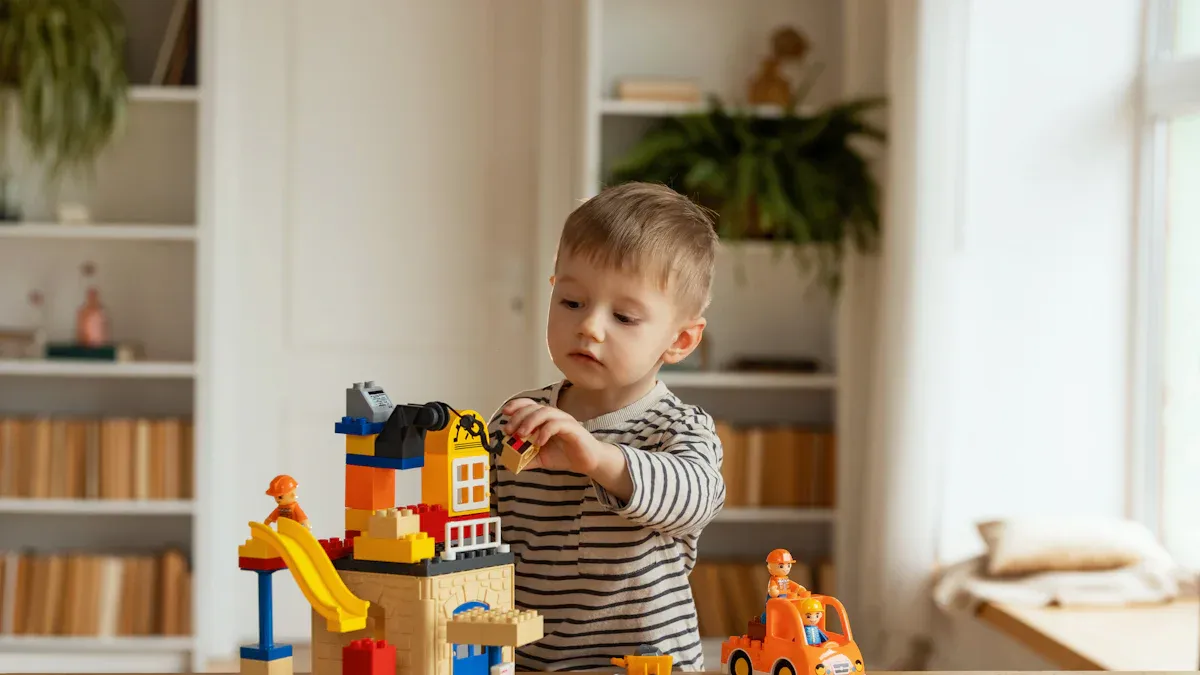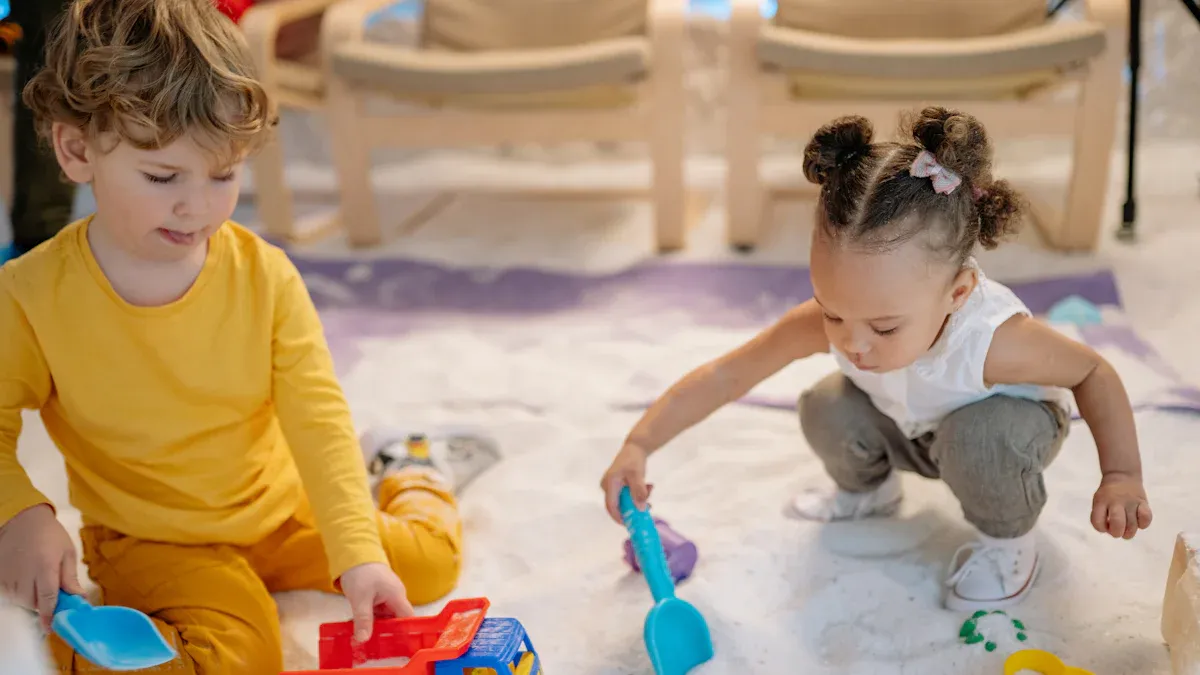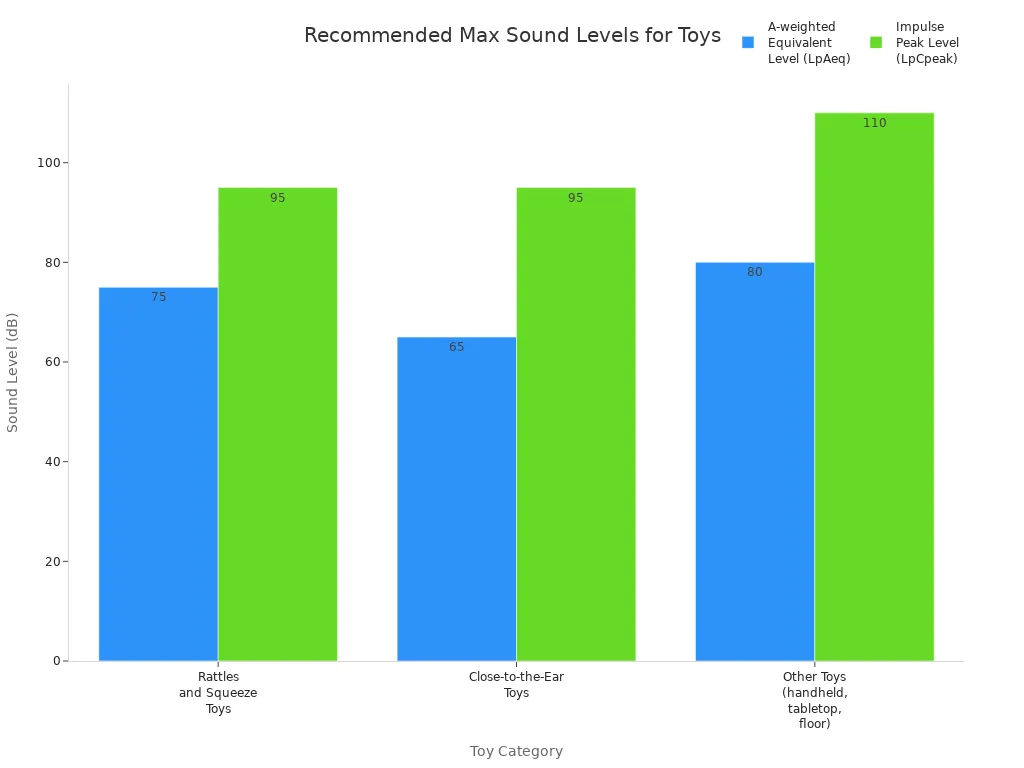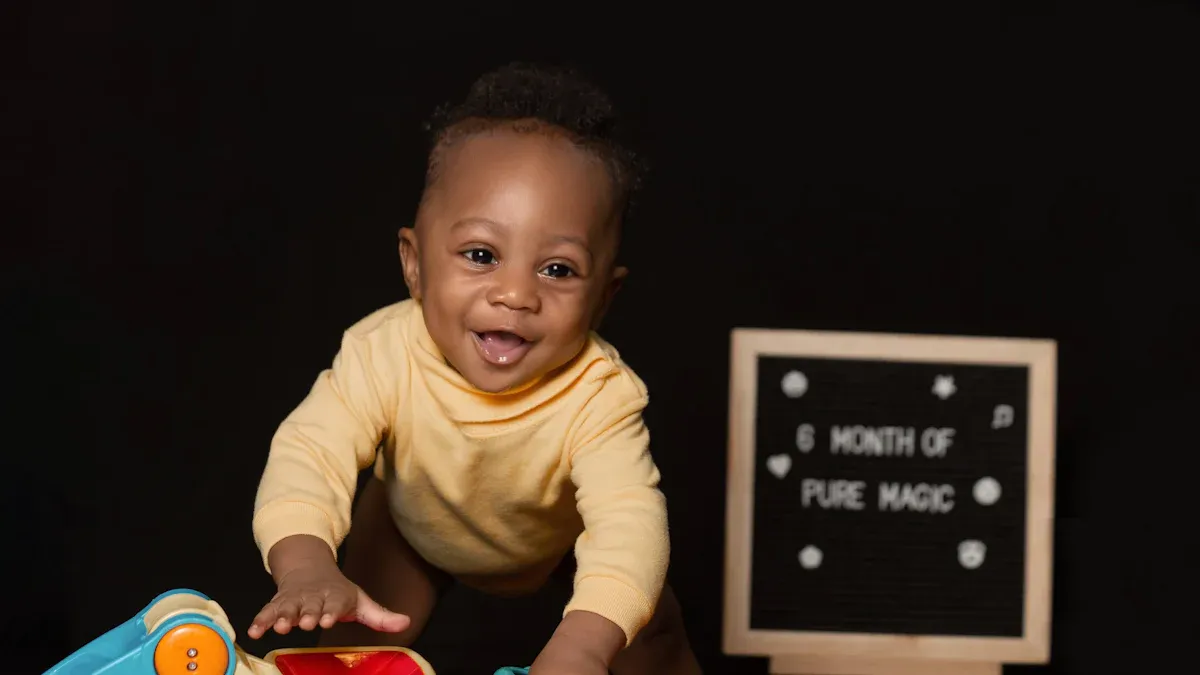How to Ensure Child Safety in Music Movement Designs for Toys

Music Movement Designs for Toys demand strict safety measures. Designers select non-toxic materials for every music box movement and music box mechanism. Parents check each Baby Music Box for secure enclosures and age-appropriate features. Routine testing and clear labels prevent accidents, keeping children safe during play.
Key Takeaways
- Choose music movement toys made with non-toxic materials and secure parts to prevent choking and injury.
- Look for age-appropriate features and clear labels to match toys with your child’s development and keep play safe.
- Regularly inspect toys for loose parts or damage, follow safety instructions, and supervise play to protect your child.
Common Safety Risks and Standards in Music Movement Designs for Toys

Choking Hazards and Small Parts
Choking remains the leading cause of toy-related deaths among young children. Small detachable parts in toys, such as beads, bells, and batteries, can easily come loose and pose a serious risk. For example, maracas in some music sets have broken apart, releasing metal beads that children could swallow. Secure battery compartments and age-appropriate toy selection help reduce these dangers. Parents and designers must always check that all components in Music Movement Designs for Toys stay firmly attached.
Sharp Edges, Pinch Points, and Strangulation Risks
Sharp edges and pinch points can cause cuts or injuries. Toys with long strings, cords, or loops increase the risk of strangulation, especially in cribs or playpens. Safety experts recommend removing crib gyms once children can pull up on their hands and knees. Voluntary standards limit string length to prevent entanglement. Choosing toys with smooth finishes and sturdy construction further protects children.
Toxic Materials and Chemical Safety
Toxic substances like lead and phthalates sometimes appear in recalled toys. These chemicals can cause severe health problems if children ingest or touch them. The table below highlights common toxic materials found in toys and their health impacts:
| Toxic Material | Source in Toys | Health Impact |
|---|---|---|
| Lead | Paint, metal parts | Lead poisoning, toxicity in children |
| Phthalates | Toy manufacturing chemicals | Toxicity, adverse health effects |
Certifications such as CPSIA, CE Marking, and OEKO-TEX Standard 100 ensure materials in Music Movement Designs for Toys remain safe for children.
Sound Level Concerns and Sensory Safety
Excessive noise from toys can damage hearing. Experts recommend the following maximum sound levels for different toy categories:
| Toy Category | Max Sound Level (LpAeq) | Max Impulse Peak (LpCpeak) |
|---|---|---|
| Rattles/Squeeze Toys | ≤ 75 dB | ≤ 95 dB |
| Close-to-the-Ear Toys | ≤ 65 dB | ≤ 95 dB |
| Other Toys | ≤ 80 dB | ≤ 110 dB |

Sensory-friendly design principles help reduce overstimulation. Designers use adjustable sound levels, calming colors, and soft lighting to create a soothing play experience.
Compliance with Safety Standards and Certifications
Manufacturers must follow strict safety standards for Music Movement Designs for Toys. Key regulations include:
- ASTM F963, which covers toys for children under 14 and addresses sound-producing toys.
- 16 C.F.R. parts 1501 and 1505, which regulate small parts and electrically operated toys.
- Consumer Product Safety Improvement Act (CPSIA), requiring third-party testing and certification.
- CE Marking and UKCA Marking for toys sold in Europe and the UK.
The Consumer Product Safety Commission (CPSC) enforces these rules in the U.S., ensuring that only safe toys reach children.
Safe Design and Quality Assurance in Music Movement Designs for Toys

Secure Enclosures and Fastened Components
Manufacturers design secure enclosures to keep internal mechanisms out of reach. They use strong fasteners and locking systems to prevent children from opening compartments or accessing small parts. Ningbo Yunsheng Musical Movement Manufacturing Co., Ltd. applies strict quality checks to ensure that screws, clips, and latches remain tight even after repeated use. This approach reduces the risk of choking hazards and accidental exposure to moving parts. Regular testing confirms that all components stay firmly attached during normal play.
Age-Appropriate Features and Clear Labeling
Designers match features to the developmental needs of each age group. For infants, toys include soft textures and gentle sounds. Toddlers benefit from toys that encourage movement, such as twisting or pressing buttons. Older children enjoy more complex actions and pretend play. The table below shows how age ranges align with developmental criteria for music movement toys:
| Age Range | Developmental Criteria |
|---|---|
| 0 to 3 Months | Reflexive learning, soothing sounds, soft and washable materials |
| 4 to 7 Months | Improved dexterity, handheld toys, light and rounded shapes |
| 8 to 11 Months | Grasping, manipulating objects, reinforcement of simple words, bright colors |
| 12 to 18 Months | Enjoyment of musical movement, cause-and-effect features, pretend play |
| 19 to 23 Months | Running, sorting, stacking, symbolic thinking, interactive buttons or pull-strings |
| 2 to 3 Years | Peak pretend play, realistic toys, active movement, creative play |
Clear labeling helps parents select the right toy for their child’s age and abilities. Labels also warn about potential hazards and provide instructions for safe use.
Material Selection and Durability Testing
Manufacturers choose non-toxic, hypoallergenic materials to protect children from harmful chemicals. They avoid sharp edges and use soft or rounded surfaces. Companies like Ningbo Yunsheng Musical Movement Manufacturing Co., Ltd. comply with global safety standards such as EN71, ASTM, ISO, and SOR. These standards require third-party testing, chemical safety checks, and regular quality inspections. Durability testing ensures that toys withstand drops, pulls, and repeated use without breaking or exposing dangerous parts. This commitment to quality extends the lifespan of Music Movement Designs for Toys and maintains safety over time.
Sound Output Limits and Sensory-Friendly Design
Designers set sound output limits to protect children’s hearing. They use adjustable volume controls and soft melodies to create a pleasant experience. For children with sensory sensitivities, designers add calming themes, tactile surfaces, and gentle lighting. Some toys include switch-activated features or weighted elements for extra comfort. Open layouts and clutter-free designs help children explore safely. By customizing sensory input, Music Movement Designs for Toys can support both stimulation and relaxation.
Tip: Look for toys with adjustable sound levels and soft textures to accommodate different sensory needs.
Regular Inspection, Maintenance, and Parental Guidance
Routine inspection and maintenance keep toys safe and functional. Experts recommend cleaning the mechanical movement and lubricating moving parts once a year. Parents should use soft brushes and lint-free cloths to remove dust. They must check for loose parts, sharp edges, or signs of wear. Supervision remains essential, especially when children play with new toys. Parents should choose toys that are the right size to prevent choking and avoid toys with sharp edges. Washable materials help maintain hygiene. Safe storage solutions, such as toy boxes without heavy lids, reduce injury risks. Parental engagement during play—such as singing, turn-taking, and interactive games—supports language development and safe use.
- Designers and parents should select safe materials, secure construction, and follow all safety standards for Music Movement Designs for Toys.
- Regular inspections, clear instructions, and ongoing vigilance help prevent hazards.
- Prioritizing safety supports healthy development and creates a positive play experience for every child.
FAQ
What should parents check before buying a music movement toy?
Parents should inspect for secure enclosures, age-appropriate labels, and non-toxic materials. They should also verify that the toy meets recognized safety standards.
How often should parents inspect music movement toys?
Experts recommend monthly inspections. Parents should look for loose parts, sharp edges, or signs of wear. Regular checks help prevent accidents and maintain safety.
Are all music movement toys safe for infants?
Not all toys suit infants. Parents should select toys labeled for infants, with no small parts or sharp edges. Always supervise play to ensure safety.